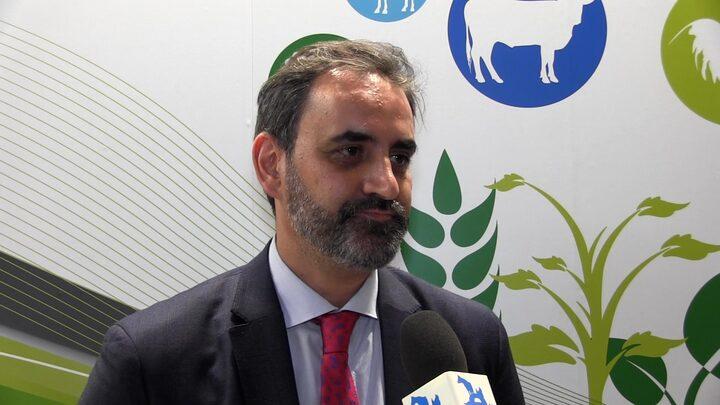Explore all the information on
Poultry nutrition - Other additives
Alternative feed additives have promising importance in broiler production due to the ban on the use of certain antibiotics. The most used antibiotic alternatives in broiler production are phytogenics, organic acids, prebiotics, probiotics, enzymes, and their derivatives. Antibiotic alternatives have been reported to increase feed intake, stimulate digestion, improve feed efficiency, increase growth performance, and reduce the incidence of diseases by modulating the intestinal microbiota and immune system, inhibiting pathogens, and improving intestinal integrity. Simply, the gut microbiota is the target to raise the health benefits and growth-promoting effects of feed additives on broilers. Therefore, naturally available feed additives are promising antibiotic alternatives for broilers.
Since Monday (23/Sep), the market price of Florfenicol has rebounded, the supply of mainstream factories has been insufficient, market transactions increased sharply, and market attention has become high. Tylosin and Tilmicosin are experiencing the same.
...
Comments : 0
Recommendations: 0
Introduction L-carnitine (LC), a naturally occurring and widely distributed in nature compound was discovered in 1905 by Gulewitsch and Krimberg [1]. For the last 50 years this nutrient has received a substantial attention from medical sciences and poultry and pig nutritionists. Main dietary sources of carnitine in poultry/animal nutrition are animal-derived feed ingredients while grains and their by-products are quite...
Comments : 9
Recommendations: 1
ABSTRACT The objective of the present study was to evaluate the effect of bile acids derived from swine on the growth performance, carcass traits, serum lipid metabolites and intestinal enzyme activities in broiler chickens. Four hundred thirty-two 1-day-old Arbor Acres male broilers were randomly assigned to 4 treatments with 6 replicates of 18 chicks each for 42 d. The experimental treatments received a corn-soybean basal diet containing lard and were as follows: 0 (control),...
Comments : 0
Recommendations: 1
Justin Fowler, Professor at the University of Georgia, talked to us during IPPE 2017 in Atlanta, USA, and explained the process that inspired him to create FeedMix, an app for feed formulation, which is easy to use and helps producers to calculate requirements....
Comments : 19
Recommendations: 12
Anthony Quant (Kalmbach Feeds) talked about grinding, batching, pelleting and mixing, among other aspects of feed control, during the Multi-State Poultry Feeding and Nutrition Conference in Indianapolis, USA....
Comments : 5
Recommendations: 6
Alex Corzo (Aviagen) gave a presentation that touched on very important subjects such as broiler nutrient requirements and environmental impact, during the Multi-State Poultry Feeding and Nutrition Conference in Indianapolis, USA....
Comments : 2
Recommendations: 2
Introduction Lycopene is a pigment red or infrastructure that exist in some vegetables and fruits (pineapple, orange, tomato, grapefruit, strawberries and sweet peppers) but found high concentrations in tomato (Agarwal and Rao, 2000) and lycopene derived carotenoid is a natural dye manufactured Some plants and microorganisms during the process of photosynthesis to protect it from the optical activity (Rao and Rao, 2004) has indicated a lot of studies that the more tomato...
Comments : 5
Recommendations: 4
ARLINGTON, Va. – Aug. 1, 2019 – The American Feed Industry Association honored Peter Ferket, Ph.D., with the AFIA-Poultry Science Association (PSA) Poultry Nutrition Award at the PSA Annual Meeting last week in Montreal,...
Comments : 0
Recommendations: 0
...
Comments : 2
Recommendations: 1
Introduction
Poultry meat is one of the most important protein sources in human diet and production is worldwide growing. Global poultry meat production in 2000 was 69 million tons and this increased to over 97 million tons in 2010 (Windhorst, 2011). This equates to an annual production of approximately 70 billion broilers originating from approximately 600 million broiler breeders. So a relatively small number of broiler breeders has...
Comments : 3
Recommendations: 4


Speculation over the Provisional Ruling on Anti-dumping Duties of Lysine by the EU Against China
Suggested link
Dr. Hannele Kettunen (Sciandics) speaks about the benefits of resin acids from coniferous trees and their antimicrobial and anti-inflammatory properties, during the 5th IHSIG Symposium on Poultry Intestinal Health in Bangkok, Thailand....
Comments : 1
Recommendations: 3
Various environmental stressors such as high ambient temperature and relative humidity influence the performance of broilers by reducing feed intake, feed conversion efficiency and hypophyseal-adrenocortical axis that in turn stimulates corticosterone which retarded growth (Dong et al., 2007). Reactive oxygen species (ROS) are generated at cellular level during normal bodily functions; however, high ambient temperature has been shown to increase the free radicals and other ROS production in...
Comments : 0
Recommendations: 0
1. Introduction Sorghum has been described as an enigmatic grain for chicken meat production because sorghum-based broiler diets have been associated with sub-optimal performance of chickens under Australian conditions (Selle et al., 2013). Six red 'tannin-free' grain sorghum varieties harvested on the Liverpool Plains of New South Wales in 2009 were extensively characterised and compared in broilers offered sorghum-casein diets (Khoddami et al., submitted for publication). On...
Comments : 0
Recommendations: 0
Introduction With the increase of microbes resistance, the use of antibiotics as growth promoters is decreasing worldwide. As a consequence, there is a need for alternative products able to maintain production performances without antibiotics. In this context, a trial was conducted on laying hens to evaluate the effects of a patented activated clay (B-Safe). ...
Comments : 13
Recommendations: 0
The quality of drinking water for poultry and its effect on performance have been of concern to poultry producers for many years. Water makes up a large proportion of the body of the chicken, from 55% to 75%, therefore it is essential for life. Chickens are able to survive much longer without feed than without water. A rule of thumb for water is that the bird consumes from 1.5 to 2 times as much water as it does feed. Therefore, it is expected that deviation in...
Comments : 71
Recommendations: 1
...
Comments : 1
Recommendations: 0
INTRODUCTION Chromium is an essential trace element in animal nutrition which is required for normal metabolism of carbohydrates, proteins and lipids in humans and laboratory animals (Balk et al., 2007). Research activities of different researchers exploring the effect of chromium on the reproductive ability of livestock have been successfully performed (Lindemann et al., 1995; Amoikon et al., 1995), but research on the use of chromium in poultry is very limited. Dietary...
Comments : 0
Recommendations: 0
Introduction. Energy is a major cost component in diets for high-performing animals. Due to their high energy density, fats and oils are important energy sources in feed formulation. Improving the energy efficiency of these raw materials is of great interest from an economical point of view. Dietary emulsifier can be used in poultry feed as an important tool to improve fat digestibility, resulting in better energy ultilization of diets. The...
Comments : 7
Recommendations: 2
Mike Donohue (Agri Stats) discussed long term trends in broiler efficiency and nutrition, as well as the transition to antibiotic-free production, during the Multi-State Poultry Feeding and Nutrition Conference in Indianapolis, USA. ...
Comments : 0
Recommendations: 4


.jpg&w=3840&q=75)




.jpg&w=3840&q=75)
















.jpg&w=3840&q=75)











